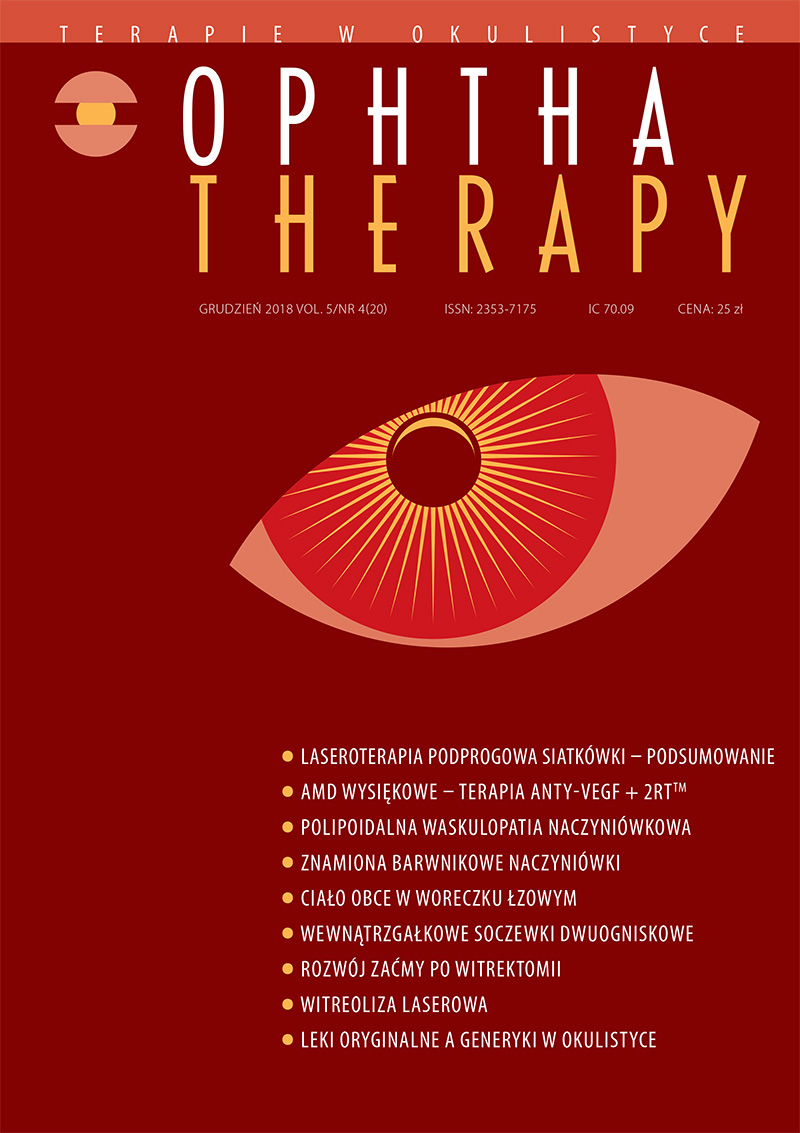Laser vitreolysis – indications and the course of the procedure
Main Article Content
Abstract
Treatments for vitreous floaters include Nd:YAG laser vitreolysis. A properly performed vitreolysis procedure using dedicated equipment (i.e. laser and appropriate lenses) is safe and predictable. Nd:YAG vitreolysis is performed in patients with floaters in the central vitreous region and without other ocular co-morbidities. The treatment involves evaporation of the vitreous floaters. Thanks to the optical breakdown of a precisely focused laser beam, it produces complete relief from the persistent problems in some patients. It is an outpatient procedure conducted under local anesthesia after prior mydriasis. YAG laser vitreolysis can be repeated if necessary.
Downloads
Article Details

This work is licensed under a Creative Commons Attribution-NonCommercial-NoDerivatives 4.0 International License.
Copyright: © Medical Education sp. z o.o. License allowing third parties to copy and redistribute the material in any medium or format and to remix, transform, and build upon the material, provided the original work is properly cited and states its license.
Address reprint requests to: Medical Education, Marcin Kuźma (marcin.kuzma@mededu.pl)
References
2. Sommerville DN. Vitrectomy for vitreous floaters: analysis of the benefits and risks. Curr Opin Ophthalmol. 2015; 26(3): 173-6.
3. Milston R, Madigan MC, Sebag J. Vitreous floaters: Etiology, diagnostics, and management. Surv Ophthalmol. 2016; 61(2): 211-27.
4. Karickhoff JR. Laser treatment of eye floaters. Washington Medical Publishing, 2006.
5. Hahn P, Schneider EW, Tabandeh H et al.; American Society of Retina Specialists Research and Safety in Therapeutics (ASRS ReST) Committee. Reported Complications Following Laser Vitreolysis. JAMA Ophthalmol. 2017; 135(9): 973-6.
6. Singh IP. Novel OCT Application and Optimized YAG Laser Enable Visualization and Treatment of Mid- to Posterior Vitreous Floaters. Ophthalmic Surg Lasers Imaging Retina. 2018; 49(10): 806-11.

